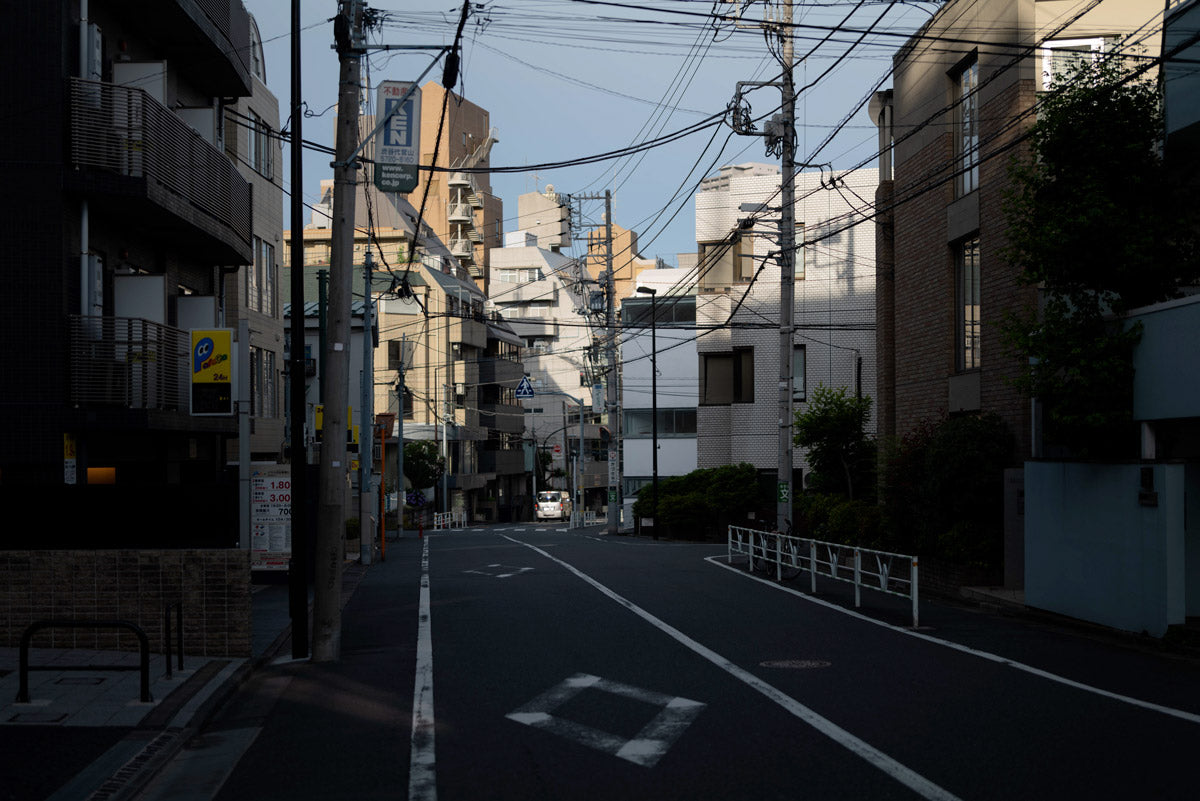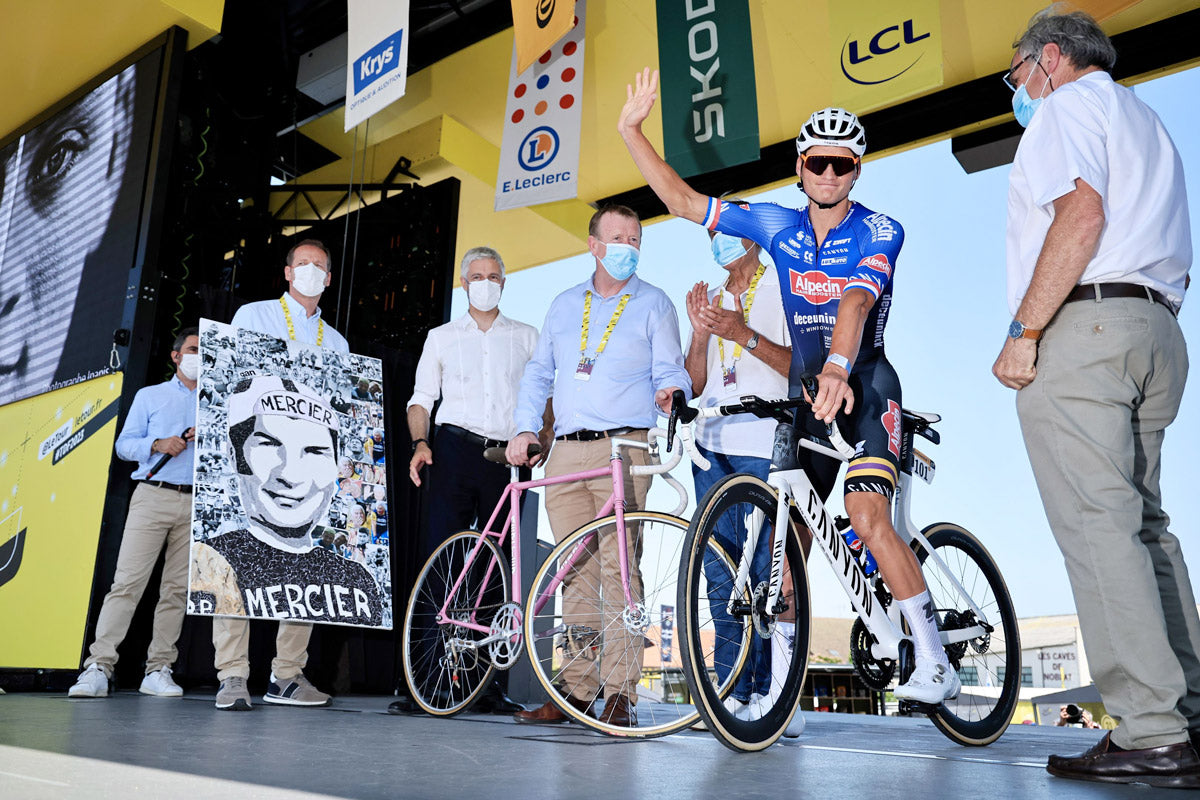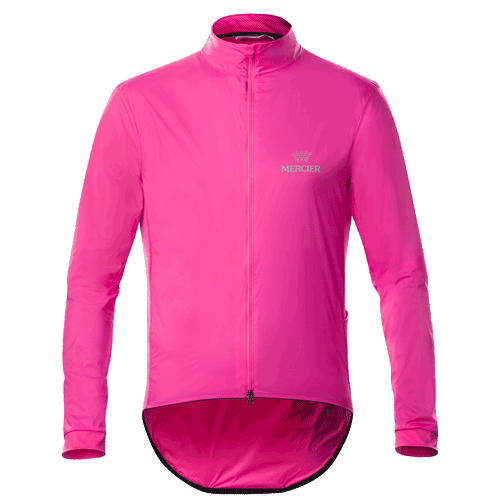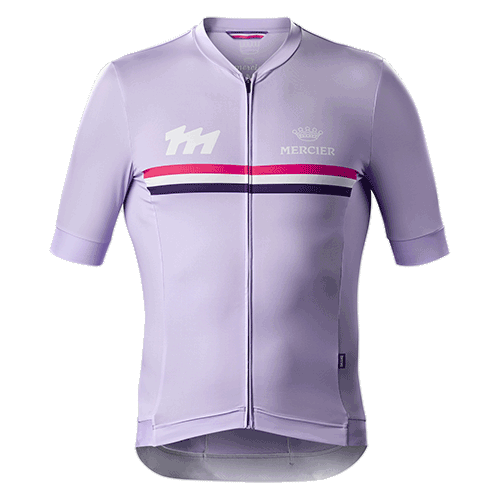This article was published in collaboration with Mercier in Rouleur 119 June 2023.
Photographie: Pascal Viout
Texte: Edward Pickering
Tokyo is the kind of place that sucks people in, but then again, it is also the kind of place from which it is necessary to escape: time is accelerated within the circle of the Yamanote subway line, therefore the counterbalance is found by heading out of the urban sprawl. Out here, beyond the rice paddies, up in the dense and humid forests of the mountains of the Japanese interior, time moves more slowly. It is measured not by the pacey lives of the Tokyomon, the people of the capital, but in the passing of the seasons, the appreciation of transience and imperfection and the slow, organic weathering of old wooden buildings.

For Pascal Viout, an expat Parisian who lives and works in Tokyo as a creative director in the advertising industry and photographer, this escape into a quieter, more sparsely populated and meditative space is the essence of the Japanese experience. The Japanese would know this as wabi-sabi, a philosophical concept which is not easily translated into English because it is as much a feeling as an empirical description of the physical world. Wabi-sabi is an ephemeral appreciation of imperfection and impermanence.

“Wabi-sabi is how you visualise time,” Viout explains. “For example, rust on metal, or wood slowly getting tinted in a different way as the years pass. It’s the patina of time. Sometimes you see a house that nobody has touched for 50 years, surrounded by trees and flowers, and there are plenty of these abandoned houses in the middle of nowhere. “There is a house I pass on my rides, with a couple, an old lady and an old man. They have a small terrace and sometimes when I pass they are just sitting there and eating their bento. They look in their 90s, and wear old clothes from the last century. They just continue to do their work, and it’s like nothing changes.”

Viout grew up in Marseille, in a cycling family, though it was only when he moved to Paris and got swept up in the fixie scene that he really became a cyclist. After crossing both the Alps and the Pyrenees on a fixed-gear bike, he decided that for riding in the mountains, at least, gears were the way forward. Since moving to Japan seven years ago, he has taken part in the Japanese Odyssey, an unsupported 2,700 kilometers ride from Kagoshima City on the southern tip of Kyushu, (the furthest south of Japan’s four main islands), to Hachinohe in Aomori prefecture, in the far north of Honshu ( Japan’s main island) on two occasions. But there is as much meaning for him in the more prosaic, everyday rides he uses to escape from Tokyo, as in an endurance challenge that covers almost the length of the country.

---
Perhaps the two most emblematic images of Japan are those of the white noise and light of Tokyo, and the snow-capped pyramid of Mount Fuji, visible on clear days to the west of the capital. However, it’s the bit in between that Viout likes to explore.  There are a couple of truisms about Mount Fuji. First, there’s a Japanese saying that you’re mad not to climb it once, and you’re mad to climb it twice - people go to the top because, like Everest, it is there, but it is a crowded place during climbing season and the whole contradictory, confusing experience of Japan is encapsulated in the fact that Coca Cola have a vending machine at the summit, carried up by a bulldozer in July and taken back down again in August. People often climb mountains to get away from civilisation; atop Fuji, you have to accept that hundreds of others are also doing so, at exactly the same time as you. Second, paradoxically, the best place to appreciate Fujisan is anywhere except Fujisan. It looks fantastic from a distance; less so close-up in a crowd.
There are a couple of truisms about Mount Fuji. First, there’s a Japanese saying that you’re mad not to climb it once, and you’re mad to climb it twice - people go to the top because, like Everest, it is there, but it is a crowded place during climbing season and the whole contradictory, confusing experience of Japan is encapsulated in the fact that Coca Cola have a vending machine at the summit, carried up by a bulldozer in July and taken back down again in August. People often climb mountains to get away from civilisation; atop Fuji, you have to accept that hundreds of others are also doing so, at exactly the same time as you. Second, paradoxically, the best place to appreciate Fujisan is anywhere except Fujisan. It looks fantastic from a distance; less so close-up in a crowd.  One of Viout’s favourite rides is out to the Wada Pass in Yamanashi prefecture. Yamanashi is the bit of Japan which sits between Tokyo and Mount Fuji, so it is the perfect place to explore the space between the Japan we know and the Japan we do not. Anybody with a passing knowledge of Japan knows Tokyo and Fuji, yet not many outside the country will even have heard of Yamanashi. Though it borders Tokyo, Yamanashi is inaka – countryside. (This being Japan, ‘inaka’ is a conceptual state of being, as well as a descriptor of rural regions.) Yamanashi’s biggest city is Kofu, population 188,000, and much of the prefecture is forested mountains, orchards and rice paddies.
One of Viout’s favourite rides is out to the Wada Pass in Yamanashi prefecture. Yamanashi is the bit of Japan which sits between Tokyo and Mount Fuji, so it is the perfect place to explore the space between the Japan we know and the Japan we do not. Anybody with a passing knowledge of Japan knows Tokyo and Fuji, yet not many outside the country will even have heard of Yamanashi. Though it borders Tokyo, Yamanashi is inaka – countryside. (This being Japan, ‘inaka’ is a conceptual state of being, as well as a descriptor of rural regions.) Yamanashi’s biggest city is Kofu, population 188,000, and much of the prefecture is forested mountains, orchards and rice paddies.  The ride is about 140km, heading out through the sprawling low-rise suburbs of Tokyo.
“The first 10 kilometres are a little bit crowded, and the road is pretty busy during the day,” says Viout. “If you go early, like five or six am, it’s okay. Then you get to the river, where there is a cycling path, so this becomes very, very peaceful. You just ride past people, like, sleeping, fishing, kayaking, people walking... It’s very Japanese.”
The ride is about 140km, heading out through the sprawling low-rise suburbs of Tokyo.
“The first 10 kilometres are a little bit crowded, and the road is pretty busy during the day,” says Viout. “If you go early, like five or six am, it’s okay. Then you get to the river, where there is a cycling path, so this becomes very, very peaceful. You just ride past people, like, sleeping, fishing, kayaking, people walking... It’s very Japanese.”  The river in question is the Tamagawa, which empties into the Pacific Ocean on the southern edge of Tokyo. By this point it is wide, with huge bridges taking traffic west and east.
The river in question is the Tamagawa, which empties into the Pacific Ocean on the southern edge of Tokyo. By this point it is wide, with huge bridges taking traffic west and east.  “When you ride the river, you can see Fuji on the left side when the weather is nice,” says Viout. “Now it’s a pretty nice ride because it’s very green and there aren’t that many big buildings. You can see the mountains coming closer, then after the river you switch on the right on to a small road and you’re in the middle of the mountains.
“You get lost in the middle of it, with small wooden houses, tiny roads, bamboo forests with hinoki [cypress] trees... You can smell everything, and for example if you are riding it now, in spring, you can see the sakura, natural cherry blossoms in the mountains. It’s super beautiful, and if you do it in summer, the air is fresh because there are rivers and a lot of trees.”
“When you ride the river, you can see Fuji on the left side when the weather is nice,” says Viout. “Now it’s a pretty nice ride because it’s very green and there aren’t that many big buildings. You can see the mountains coming closer, then after the river you switch on the right on to a small road and you’re in the middle of the mountains.
“You get lost in the middle of it, with small wooden houses, tiny roads, bamboo forests with hinoki [cypress] trees... You can smell everything, and for example if you are riding it now, in spring, you can see the sakura, natural cherry blossoms in the mountains. It’s super beautiful, and if you do it in summer, the air is fresh because there are rivers and a lot of trees.”  “You get lost in the middle of it, with small wooden houses, tiny roads, bamboo forests with hinoki [cypress] trees... You can smell everything, and for example if you are riding it now, in spring, you can see the sakura, natural cherry blossoms in the mountains. It’s super beautiful, and if you do it in summer, the air is fresh be- cause there are rivers and a lot of trees.”
“You get lost in the middle of it, with small wooden houses, tiny roads, bamboo forests with hinoki [cypress] trees... You can smell everything, and for example if you are riding it now, in spring, you can see the sakura, natural cherry blossoms in the mountains. It’s super beautiful, and if you do it in summer, the air is fresh be- cause there are rivers and a lot of trees.”  The Japanese are very invested in the fact that their country has four very distinct seasons, with significant contrasts, plus a rainy season in June which is hot and humid. Winters are cold and snowy, spring is warm with blue skies and cherry blossoms, rainy season segues into summer, which is very hot, autumn is warm but far less humid with amazing colours in the forests as the leaves turn gold, red and then brown. This means that the same ride can be experienced in completely different ways - the colours and flowery smells of sakura make a spring ride an invigorating experience, while the air during summer feels heavy and laden with humidity. Autumn views are crystal clear, colourful and sharp; winter is snowy, and the mountain roads will likely be unrideable. Time taps out its rhythm as a ride unfolds, as pedal strokes translate into distance covered. But each ride also marks the passing of the seasons, which beat out a much slower rhythm. And, with enough perspective, a lifetime.
The Japanese are very invested in the fact that their country has four very distinct seasons, with significant contrasts, plus a rainy season in June which is hot and humid. Winters are cold and snowy, spring is warm with blue skies and cherry blossoms, rainy season segues into summer, which is very hot, autumn is warm but far less humid with amazing colours in the forests as the leaves turn gold, red and then brown. This means that the same ride can be experienced in completely different ways - the colours and flowery smells of sakura make a spring ride an invigorating experience, while the air during summer feels heavy and laden with humidity. Autumn views are crystal clear, colourful and sharp; winter is snowy, and the mountain roads will likely be unrideable. Time taps out its rhythm as a ride unfolds, as pedal strokes translate into distance covered. But each ride also marks the passing of the seasons, which beat out a much slower rhythm. And, with enough perspective, a lifetime.  Physicists have observed that time does not always move at the same rate. If you take two clocks, one on Earth, and one moving on a spaceship at great speed, the faster-moving clock will move slower than the Earthbound one. The closer the theoretical space clock gets to the speed of light, the slower time passes. However, this is not the experience of cyclists, for whom time seems to pass slower when they are moving more slowly. When Viout’s ride reaches the town of Uenohara, the western most point of the day, the road tips upwards for the eight-kilometre climb of the Wada Pass, which tops out at just under 700m altitude. The Wada pass is a steep, sinuous grind through forests with stacks of hairpins separated by long curving stretches of road rising up valley walls..
Physicists have observed that time does not always move at the same rate. If you take two clocks, one on Earth, and one moving on a spaceship at great speed, the faster-moving clock will move slower than the Earthbound one. The closer the theoretical space clock gets to the speed of light, the slower time passes. However, this is not the experience of cyclists, for whom time seems to pass slower when they are moving more slowly. When Viout’s ride reaches the town of Uenohara, the western most point of the day, the road tips upwards for the eight-kilometre climb of the Wada Pass, which tops out at just under 700m altitude. The Wada pass is a steep, sinuous grind through forests with stacks of hairpins separated by long curving stretches of road rising up valley walls..  Up here, in the middle of the mountains, it seems impossible that one of the biggest cities in the world is just over the horizon. But Japan is a land of contrasts: it is Tokyo and Fujisan, but it is also the forested mountains that run up the spine of Honshu and the weathered hut, a living experience of wabi-sabi. From the Wada Pass, it is a similarly steep and sinuous descent to the suburb of Hachioji, past tea terraces and a few rice paddies, and back to Tokyo across the Tamagawa.
Up here, in the middle of the mountains, it seems impossible that one of the biggest cities in the world is just over the horizon. But Japan is a land of contrasts: it is Tokyo and Fujisan, but it is also the forested mountains that run up the spine of Honshu and the weathered hut, a living experience of wabi-sabi. From the Wada Pass, it is a similarly steep and sinuous descent to the suburb of Hachioji, past tea terraces and a few rice paddies, and back to Tokyo across the Tamagawa.  The interior of Japan is less well known than the big cities which attract most of the international tourists. And you can argue about whether the wabi-sabi aesthetic of the inaka is any more the ‘real’ Japan than the neon striplights of Shinjuku. But what you can say is that hidden away in the forested interior of Japan, away from the densely populated cities of the coast (apart from Kyoto, Japan’s 28 biggest cities are all on the coast, and Kyoto sits on the country’s biggest lake), are some of the best roads for cycling anywhere in the world. There is a network of minor roads, known as ‘rindo’ (forest paths) meshed over the entire country, which wriggle their way between towns and villages, and they are stunning. Some are even closed to cars, making them perfect for cycling. The Wada Pass is a rindo, though open to cars. Conversely, the experience of rid ing in the Japanese mountains is generally different from, say, the Alps or Pyrenees. Japanese valleys tend to be steep and forested, and there is less sense of panoramic openness - the roads tend to stick under the trees, so it is an intimate experience with the mountain.
The interior of Japan is less well known than the big cities which attract most of the international tourists. And you can argue about whether the wabi-sabi aesthetic of the inaka is any more the ‘real’ Japan than the neon striplights of Shinjuku. But what you can say is that hidden away in the forested interior of Japan, away from the densely populated cities of the coast (apart from Kyoto, Japan’s 28 biggest cities are all on the coast, and Kyoto sits on the country’s biggest lake), are some of the best roads for cycling anywhere in the world. There is a network of minor roads, known as ‘rindo’ (forest paths) meshed over the entire country, which wriggle their way between towns and villages, and they are stunning. Some are even closed to cars, making them perfect for cycling. The Wada Pass is a rindo, though open to cars. Conversely, the experience of rid ing in the Japanese mountains is generally different from, say, the Alps or Pyrenees. Japanese valleys tend to be steep and forested, and there is less sense of panoramic openness - the roads tend to stick under the trees, so it is an intimate experience with the mountain.  “For me, it’s one of the best countries for cycling,” says Viout. “You can go from Tokyo to Hiroshima using the rindo. In the mountains you don’t see anybody, it can be super wild. You can see bears, deer and snakes. You feel totally lost, and you can just stop in the middle of a small village with wooden houses that are 150 years old and eat soba in a small shop. With the trees, you have this darkness in the middle of the day, and it’s very beautiful. I really enjoy living in Tokyo, but you only have concrete buildings there and you need something different. In 50km, you’re in the green, among shinto temples, so it’s a real adventure every time. The rindo are nice to explore because you always find new routes. Sometimes with earthquakes and the rains they can be in bad condition - once we had to climb 500m over the mountain because the road had disappeared.
“For me, it’s one of the best countries for cycling,” says Viout. “You can go from Tokyo to Hiroshima using the rindo. In the mountains you don’t see anybody, it can be super wild. You can see bears, deer and snakes. You feel totally lost, and you can just stop in the middle of a small village with wooden houses that are 150 years old and eat soba in a small shop. With the trees, you have this darkness in the middle of the day, and it’s very beautiful. I really enjoy living in Tokyo, but you only have concrete buildings there and you need something different. In 50km, you’re in the green, among shinto temples, so it’s a real adventure every time. The rindo are nice to explore because you always find new routes. Sometimes with earthquakes and the rains they can be in bad condition - once we had to climb 500m over the mountain because the road had disappeared.  “In winter, the natural landscape is very brownish in Japan, but in spring and summer it’s vivid green. And I love riding in the rainy season because you get a heavy, misty atmosphere, and it feels like a different world.”
“In winter, the natural landscape is very brownish in Japan, but in spring and summer it’s vivid green. And I love riding in the rainy season because you get a heavy, misty atmosphere, and it feels like a different world.”  Pascal Viout’s rides are a way of escaping Japan, paradoxically by going more deeply into Japan. When life feels like it is moving too fast, one of the best ways of slowing it down is to get on the bike, head out and allow the wabi-sabi to calm the soul.
Pascal Viout’s rides are a way of escaping Japan, paradoxically by going more deeply into Japan. When life feels like it is moving too fast, one of the best ways of slowing it down is to get on the bike, head out and allow the wabi-sabi to calm the soul.  “I think it’s a real therapy,” says Viout. “When you don’t have to think, except just for riding and sleeping, everything is easier after that. You feel lighter.”
“I think it’s a real therapy,” says Viout. “When you don’t have to think, except just for riding and sleeping, everything is easier after that. You feel lighter.”
Read more

We asked french Art Director and Mercier friend Pascal Viout to share with us his favorite ride in Tokyo area. Living in Japan for a few years now, one of Viout’s favourite rides is out to the Wada...

On July 9, Mathieu van der Poel was overcome with emotion on the starting podium of Sunday's Tour de France stage 9 in Saint-Léonard-de-Noblat as he honored the memory of his grandfather Raymond Po...






